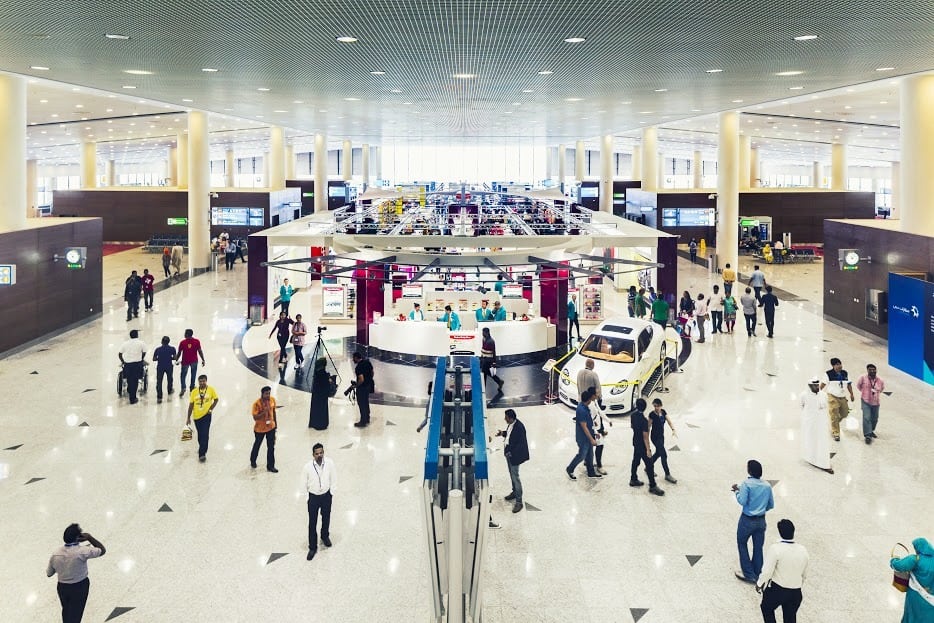Skift Take
Airport sales are not only growing faster than traditional retail outlets, but also providing multiple, multi-channel advertising opportunities well-positioned to reach luxury brands' target customers.
Luxury airport retail is thriving, representing an opportunity for luxury retailers, airports, and marketers all seeking to capture the attention and spend of affluent global consumers.
Let’s start by looking at the numbers: Duty-free shopping is set to reach $64 billion in total revenue by 2020 and more than two-thirds of international travelers make purchases from duty-free stores. Approximately six percent of luxury shopping now takes place at airports, up four percent from last year.
Airport retail has become so important in recent years that’s been pegged the “sixth continent of luxury.”
It is a lucrative and critical component for luxury brands in their business strategies. For example, Italian sunglass maker Luxottica’s 155 airport stores are its best performers out of all 3,000 retail locations.
“The data shows that the airport environment is incredibly attractive to luxury advertisers as a large proportion of travelers fit the profile of affluent, highly influential consumers,” said Anne Lim, global head of strategy at Kinetic’s travel arm told Jing Daily.
“Luxury brands need to rethink airport out of home advertising as a space (not only a media) for connected communications.”
This is even more important in light of the traditional retail environment.
Brick-and-mortar retail has shown low single-digit growth for the past few years. Meanwhile, airport stores, alongside e-commerce, showed strong growth in 2016 in comparison to department stores, specialty stores, and mono brand stores. With a projected growth of over 70% in the next four years, it’s one of the fastest growing segments in retail.
Ripe for Marketing
In addition to generating actual sales, airports are also fertile grounds for marketing efforts. Brands’ target affluent customers are often unoccupied for hours giving companies the opportunity to deliver a specific and targeted message. The two most efficient channels are digital displays and mobile notifications.
One of the most important steps is marketing to flyers in their languages, which thankfully is increasingly easier than ever to do.
A recent partnership between Schipol’s See Buy Fly and UnionPay represents the results: A targeted campaign used large screens to welcome people arriving on flights from China in their own language during the Chinese New Year. The campaign led to a 27 percent increase in spend per transaction and 177 percent growth of UnionPay’s turnover.
Luxury brands are also bullish on mobile. With more than 50 percent of travelers logging into Wi-Fi, brands can use geofencing technologies to target consumers by location or push deals and offers as they pass by. Other possibilities are allowing customers to book services via an app prior to arrival or order food to a gate.
Airport Challenges
All this growth does not mean that the sector is without challenges. European and American airports are managed by a variety of private and public stakeholders which can make it more difficult to innovate or even establish a brand within the ecosystem.
In addition to airport regulations, retailers also have to navigate longer operating hours, stocking challenges, and labor setbacks that result from rigorous vetting processes and airports’ locations. Brands often turn to third parties to work through the troublesome process.
Airports are managed differently in Asia with astounding benefits for retailers. It is the largest regional airport retail market, accounting for 41 percent of all revenue share in 2015.
For example, Singapore Changi Airport boasts more than 76,000 square meters of retail floor space and reached retail sales of $1.7 billion in 2016. French luxury brand Louis Vuitton recently announced it would open its first duplex airport boutique at Changi.
The construction of new terminals in countries like Brazil, Russia, and India as well as complete renovations of U.S. terminals point towards an improving airport retail ecosystem. Airports are being designed with shopping in mind. Retail accounts for approximately 30 percent of non-aviation revenues made by airports worldwide, making this a win-win for all parties involved.
A unique selling point and duty free proposition combined with a captive audience has created a growing airport trail ecosystem that all involved stakeholders are poised to protect.
The Daily Newsletter
Our daily coverage of the global travel industry. Written by editors and analysts from across Skift’s brands.
Have a confidential tip for Skift? Get in touch
Tags: changi, luxury, retail, shopping
Photo credit: Departure and shopping at Dubai's Al Maktoum International Airport. Dubai World Airports
